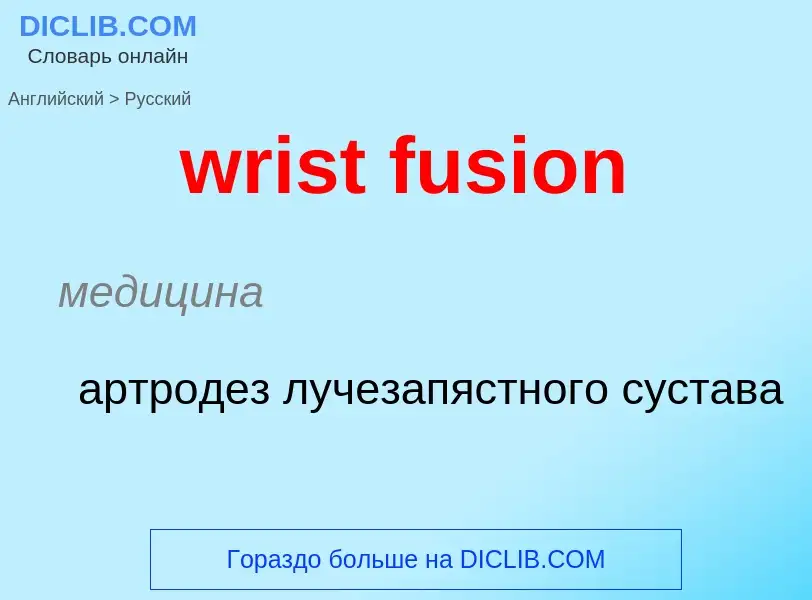Перевод и анализ слов искусственным интеллектом ChatGPT
На этой странице Вы можете получить подробный анализ слова или словосочетания, произведенный с помощью лучшей на сегодняшний день технологии искусственного интеллекта:
- как употребляется слово
- частота употребления
- используется оно чаще в устной или письменной речи
- варианты перевода слова
- примеры употребления (несколько фраз с переводом)
- этимология
wrist fusion - перевод на русский
медицина
артродез лучезапястного сустава
['fju:ʒ(ə)n]
общая лексика
слияние
вплавление
конденсация
непровар
плавильный
плавка
провар
размягчение
сплав
сплавление
таяние
термитный
физика
синтез
медицина
анкилоз
артродез
фузия
строительное дело
плавление
нефтегазовая промышленность
оплавление
существительное
общая лексика
плавка
расплавление
сплавление
расплавленная масса
расплав
слияние
коалиция
расплавленная масса, сплав
слияние, объединение
физика
термоядерный сплав
психология
смешанные побуждения или чувства
музыка
фьюжн
джаз-рок (сплав джаза и рока)
Определение
Википедия

A thumb compass is a type of compass commonly used in orienteering, a sport in which map reading and terrain association are paramount. In cases of homogeneous terrain with few distinct features, a bearing between 2 known points on the map may be used. Consequently, most thumb compasses have minimal or no degree markings at all, and are normally used only to take bearings directly from a map, and to orient a map to magnetic north. Thumb compasses are also often transparent so that an orienteer can hold a map in the hand with the compass and see the map through the compass.
Thumb compasses attach to one's thumb using a small elastic band.
The first commercially successful orienteering thumb compass was the Norcompass, introduced by Suunto in 1983.
Placing an even greater emphasis on speed over accuracy, the wrist compass lacks even a baseplate, consisting solely of a needle capsule strapped to the carpometacarpal joint at the base of the thumb; the thumb serves the function of a baseplate when taking and sighting bearings. It is often used for city and park race orienteering.


